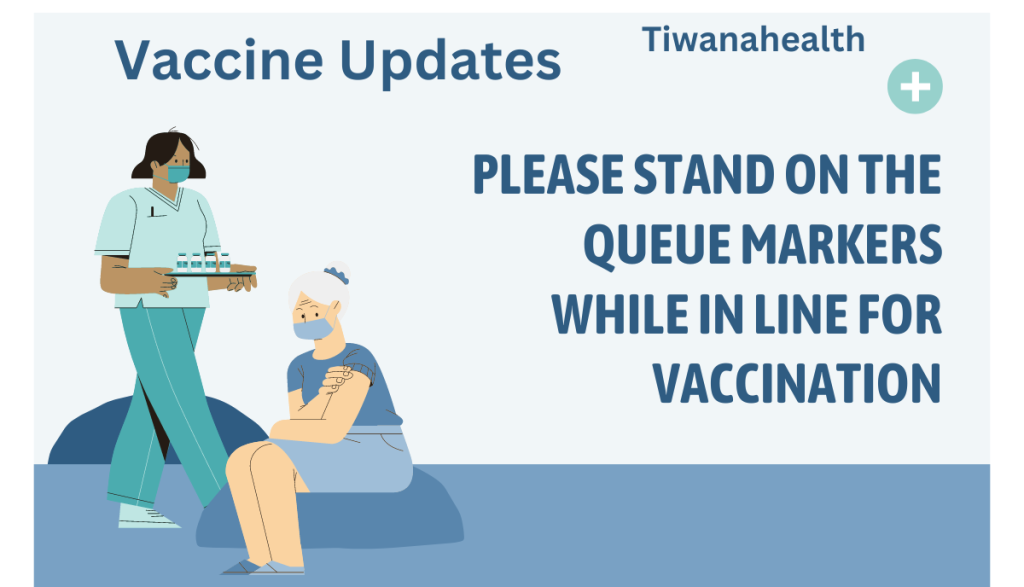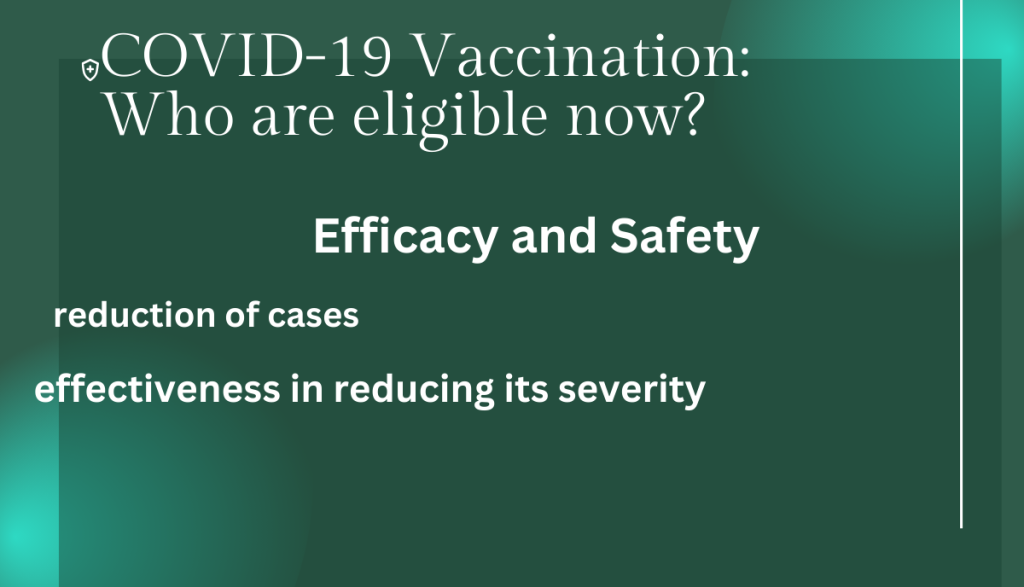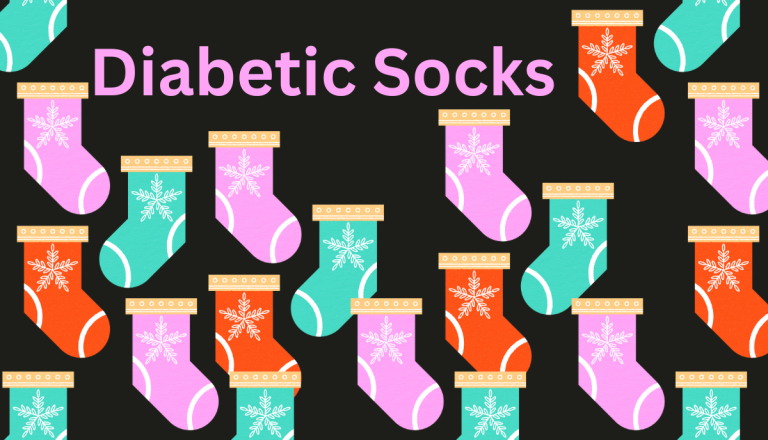Covid-19 newsletter
Contents
Introduction
Welcome to this edition of our COVID-19 Newsletter, in which we try to bring to you the latest information, insights, and guidance with respect to COVID-19. Our aim is to help present you with as much reliable information as possible so that you can help keep yourself safe and healthy through this period of global catastrophe.
In the feature story of this issue, we update you on the latest regarding COVID-19 variants and vaccination roll-outs across the globe, as well as consequences to a broad swath of other aspects of life. We also include some expert advice on how best to protect yourself and your loved ones while communities work through the process of controlling the spread of the virus. From mental and physical well-being to travel restrictions and the latest public health policies, be informed about timely information regarding the pandemic. These and other subjects will guide us to leave you empowered with all knowledge at our disposal in these unparalleled times.
What’s Inside This Issue:
Vaccine Updates:
We bring to you the latest in vaccine rollouts, including booster shots, children vaccines, and challenges and successes so far realized in vaccination efforts across the world. We include in-depth country reports to further put into perspective how nations are handling the pandemic.

Development and Approval
Updates on vaccines usually start with the trending information about new vaccine candidates entering clinical trials. This section may further include reportage of updates related to the approval process of vaccines, including specifically those for which regulatory bodies like the U.S. Food and Drug Administration or the European Medicines Agency have issued an EUA status. This may also include modifications of existing vaccines against new variants.
Distribution and Administration
This segment of the update focuses on the vaccine distribution logistics and details of their administration process. This includes the scale to which each vaccine has been distributed and administered doses at home and globally. This section provides detail on the priority groups that the vaccines are being allocated to, by age, health, or occupation factors, in an effort to shed more clarity about the strategy of the rollout.
Efficacy and Safety
Updates on the effectiveness and safety of vaccines are very critical. This shall involve the outcome of recent studies or clinical trials on how effective these vaccines are against COVID-19: reduction of cases, effectiveness in reducing its severity, and the ability against different strains. Another aspect is that of safety, which touching on possible side effects or reaction reports that could have been received, hence creating transparency that assists in building public trust in the vaccination exercise.

Public Health Impact
Very often, vaccine updates include information on the broader impact of vaccination efforts on public health. To this end, statistics are given regarding cases, hospitalizations, and deaths saved by large-scale vaccination. Trends in viral transmission, as influenced by vaccines in communities, regions, and countries, are also shared.
International Perspectives
Because the pandemic has been global, there is almost always some piece of vaccine update information that provides an international perspective. These include how different countries are faring with their vaccination programs, how low-income countries are struggling to access vaccines, and how international cooperation efforts—like COVAX, which looks to guarantee fair access to COVID-19 vaccines worldwide—are performing.
Future Directions
Finally, vaccine updates almost invariably end with a look to research in progress toward the development of vaccines, including boosters and vaccines for children and other distinct populations. This includes forecasting future needs for vaccination—such as annual shots against new variants—and strategies to improve vaccine uptake.
These updates are important in keeping the public informed and engaged in the vaccination process underpinning widespread immunity, which can finally put a close to the pandemic. Staying updated shall help people make an informed decision on vaccination, contributing to collective efforts towards the safeguarding of public health.
Knowing Variants:
The newest variants of COVID-19 have dropped like a bombshell and brought a wave of concern. We list here which variants have been identified, how they differ from previous strains, and what scientists say about the current vaccines’ effectiveness against them. Health and Safety Protocols: As the world keeps changing ways to adapt and get on with living life in the reality of COVID-19, health and safety protocols seem to be constantly changing and being updated. We bring to you here the latest protocols politicians and health authorities set regarding the use of masks, social distancing, or even the safe reopening of schools and businesses.
It is important to know the different variants of the virus causing COVID-19 in the control of disease spread and the resulting public health responses. Variants are just changes in the virus’s genetic code, a process that is natural to all viruses. The majority of the mutations in a virus make no useful difference and are randomly neutral, but sometimes they may suffice to change the characteristics of a pathogen, be it in its transmission or in the severity of the resulting disease or evasion of vaccine-induced or therapeutic-induced immune response.
Classification of Variants
The types of COVID-19 viruses are usually grouped based on their characteristics and the level of danger they expose. They include the following:
Variants of Interest: Genetically marked variants which are predicted to bear on transmissibility, diagnostics, therapeutics, or immune escapement. Those identified as causing significant community transmission or multiple COVID-19 clusters in multiple countries.
Variants of Concern (VOCs): A variant becomes of concern when it: shows increased transmissibility; evidence of more severe disease, increased hospitalisations or deaths; significant reduction in neutralization by antibodies elicited by previous infection or vaccination; reduced effectiveness of treatments or vaccines; or failures with the detectability of diagnostic detection.
High Consequence Variants: The use of this descriptor is limited to variants for which there is substantial evidence that prevention interventions and medical countermeasures have significantly decreased in effectiveness relative to previously circulating variants.
Monitoring and Surveillance
Genomic surveillance is critical to the discovery and tracking of new variants. Health organizations globally, like the CDC and WHO, monitor the genetic sequencing of viral samples to identify developing mutations and classify variants. This surveillance outlines knowledge about how widespread certain variants are and whether they may or may not likely affect health outcomes or even interfere with vaccination efforts.
Impact on Vaccine Efficacy
The biggest concern with the new strains, however, is their possible impact on the efficacy of current vaccines. Some have mutations in the virus’s spike protein, the very target of most COVID-19 vaccines. Mutations in the protein can therefore make it less possible for antibodies stimulated by the vaccine to find and neutralize the virus, thereby reducing the potentness of the vaccine it received. However, most vaccines still provide significant protection against severe disease and hospitalization for variant strains.
Public Health Responses
Knowledge regarding the nature of the variants helps guide public health responses: if a variant has been proven to significantly increase transmissibility, health authorities may enforce much stricter measures or delay the loosening of lockdowns to avoid their spread. Also, if avoidance of the immune response of a particular vaccine has been proven by a specific variant, it is possible to formulate and distribute booster shots or develop a vaccine that is specifically in line with the new variant.
This is because this is a pandemic of global proportion where the variants spread fast, transcending borders. In this view, there is an imperative need for international cooperation in terms of data sharing associated with tracking and responding to new variant emergences. Sharing viral genome sequences and data on the effectiveness of vaccines against new variants, and putting in place coordinated measures of containment are among the areas that call for cooperation.
Understanding the situation vis-à-vis the variants of COVID-19 has an advanced interplay of virology, genetics, epidemiology, and public health strategy. Keeping up with new variants can help people and communities adapt to a changing landscape of the pandemic while underscoring, in essence, the urgency of population-wide vaccination and other public health measures.
Mental Health Focus:
Having condensed the very deepest impacts that the pandemic has on mental health, we provide resources and advice on how to cope with the psychological effects of sustained social isolation, the anxiety, and stress related to COVID-19. This section includes expert advice and links to mental health support networks and services. The concern for mental health in the context of COVID-19 becomes all the more important because it has had very deep impacts, psychological and emotional, on people all across the globe. At another level, it has brought out myriad forms of mental issues: heightened anxiety and depression, not to mention feelings of isolation and stress due to social distancing and economic uncertainty, as well as fears about health. How Much Do We Really Know? Impact on Mental Health Increased Anxiety and Depression: This has been coupled with an essentially very virulent effect of the contagion. A sense of uncertainty has set in regarding the future—a reason undergirding much anxiety. At the same breath, many have suffered depressive symptoms from loss—either of loved ones or job security and normalcy. Economic Uncertainty Stress: The degree to which people lost their jobs or were furloughed or closure of businesses has been so immense as to precipitate financial stress and uncertainties that spur anxiety and depression. The economic effects have also been far-reaching, striking where it hurts most; the ability to provide for one’s family, manage health needs, and acquire housing.
Isolation and Loneliness:
With increased lockdowns and social distancing, even where necessary for public health, comes increased social isolation and loneliness—some triggers of mental health problems that have consequently worsened existing mental health conditions. Impact on High-Risk Groups:
Other groups that are more exposed by the effect of the pandemic include front-line healthcare workers, individuals with pre-existing mental illnesses, the elderly, and those living alone. Mental Mitigation Strategies: Public Health Messaging Probably the single largest tool in anxiety reduction, while simultaneously continuing to arm people with the information they need about the pandemic and how to protect themselves, is through clear and consistent messaging from public health. This kind of information reduces uncertainty and fear. Access to Mental Health Services: Use of telehealth and online counseling in the pandemic period helped in easily realizing improved access to mental healthcare services. The majority of mental health professionals shifted to online platforms for ensuring continued support without jeopardizing physical health. Community and Social Support: Community-based efforts in the form of online support groups and helplines provide a network of linkage and support that is paramount to those experiencing feelings of isolation or who are in mental health crisis due to the pandemic. Workplace Mental Health Programs: Employers have, by now, taken a very front-line role in supporting mental health. Most of those employers have constructed more comprehensive mental health programs and resources, which involve flexible working policies and days off from work in support of mental health. Education and Awareness Campaigns: A campaign undertaken in this aspect will aid in de-stigmatizing the act of seeking help and increasing the proportion of people reaching out for help at times when they are in need. Integrating Mental and Physical Health Care: As physical health and mental health interact with each other, it is therefore necessary to integrate care services so that a person receives proper comprehensive care for effective solutions. The strong emphasis on mental health during the pandemic delivers yet another message in the building of strong yet flexible support systems so that they are able to outlast such a catastrophe and surmount its psychological effects. It underscores community resilience, accessible healthcare, and the normalization of challenges to mental health. The world has moved further in recovery from the pandemic; nevertheless, lessons learned so far on the management of mental health are still very strong and relevant for current and future public health challenges.
Economic Impact Analysis:
Go through in-depth analyses of the impact of COVID-19 on the world economy. We shall assess the effect in sectors such as retail, education, and travel and consider the form recovery may take post-pandemic. These are very deep and wide-ranging economic impacts that afflict nearly every sector of the world economy. An in-depth understanding of how these economic effects have been understood shall be derived from an analysis of the factors at play, moving from consumer behavior through disruptions to supply chains, government interventions, and long-term prospects for economic recovery. Systematic major economic impact areas:
Supply Chain Disruptions:
The pandemic has probably led to the most direct effect in the case of global supply chain disruptions. The lockdown and restriction on movement delay and bring production to a halt, more so in industries such as manufacturing, automotive, and electronics. This will have a knock-on effect, hitting businesses downstream in the supply chain.
Changes in Consumer Behaviour:
Consumer behaviour changed radically during the pandemic. On one hand, online shopping increased, while on the other hand, visits to physical retail stores declined, thus affecting retail disparately. Consumer preference has also increasingly shifted towards essential goods and health-oriented products and away from luxury goods and nonessential services.
Employment Impact:
The slow pace of the economy translated into high levels of unemployment in the global arena. In that regard, many hospitality, travel, and retailing companies ran out of business or significantly reduced their operations, rendering millions of workers jobless and reducing their income significantly.
Government Interventions:
Most of the world’s governments instituted various hefty fiscal and monetary policy interventions to counter the economic crisis. These ranged from stimulus packages, unemployment benefits, and tax relief to slashing interest rates in an effort to boost economic activity and relieve the affected businesses and people.
Sector-Specific Impacts:
Travel and Tourism: Probably no industry was as badly hit as this one, with international travel almost coming to a standstill during the peak period. Unprecedented losses all around for airlines, travel agencies, and the hospitality sector.
Healthcare: While health as an industry received unprecedented surges in demand with pharmaceuticals, personal protective equipment, and health services, non-urgent medical care decreased due to diversion of resources toward COVID-19 responses. Education: This was the boon and challenge of the sector, with its effect on institutions, students, and ed-tech providers because of a shift to remote education.
Real Estate and Construction: Both residential and commercial real estate had mixed performances. Commercial real estate suffered as demand was reduced due to work-from-home arrangements, but for some parts of the residential sector, prices have gone through the roof partly due to the low interest rates.
Long-term Economic Outlook
The economic impact of COVID-19 is here to stay in the long run. As restrictions are rolled back only slowly and consumer confidence is gained step by step, some sectors may bounce back quickly, others irretrievably changing. Permanent changes in habits of work, consumer behavior, and patterns of trade could fundamentally alter economies forever.
Innovation and Adaptation:
There are all reasons to believe that new models—acquired during confinement in the form of habits, like remote work and e-commerce—are there to stay. There is a case for an increase in innovation, mostly related to digital technologies, healthcare, and manufacturing processes.
Government Debt:
Many countries now have greater public debt, since most governments have spent a huge amount on the pandemic. This will therefore be a balancing act to manage the debt and at the same time support economic recovery.
Global Inequality:
The pandemic has increased inequalities both across and within countries. The recovery provides an opportunity to start reducing these inequalities but risks making them worse if it is managed badly. Conclusion: The economic analysis associated with COVID-19 is like a simmering pot of challenges and opportunities. While as much as the short-term effects have been largely devastating, their aftermath is promising, and in their long-term effect, offer a chance to recreate resilient economies, those that are at least fair. The earth is still trying to navigate through dreadful times; hence, analysis has to be continuous to tend to efficient responses and recovery strategies.
Personal Stories:
Read from people across the globe as they share their stories amidst the pandemic, stories of plight, resilience, and hope—very human pictures of struggle and triumph in these times.
Q&A Section:
Our team of experts responds to all of your burning questions about COVID-19, anything from advising you about traveling and meeting in social gatherings to explaining medical information and health safeguards. We keep you updated with the latest and most appropriate information to help you have a full understanding of the COVID-19 landscape and how to navigate it effectively. We believe that an informed community of individuals is the way to have a responsive and resilient community. Stay safe, stay informed, and let us continue to support each other through informed action and shared responsibility.



